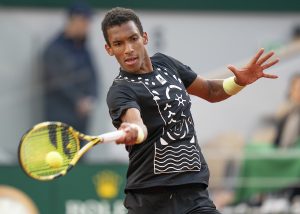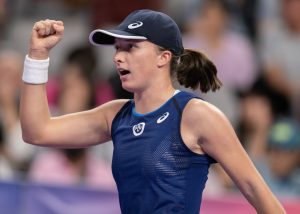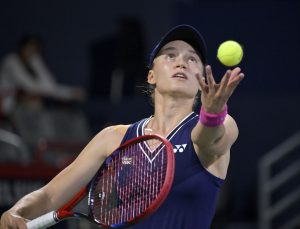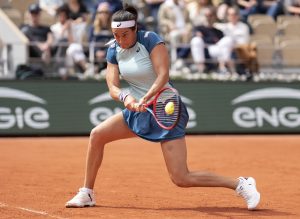Is tennis the sport that broke a thousand hips? It must seem like that to British tennis fans, after they learned this week that Laura Robson has followed Andy Murray in having hip problems so severe that she will have to undergo a third hip operation at some point in the near future.
Tennis is usually thought of as being most damaging to a player’s upper body, and in particular their arms and hands, which of course are a tennis player’s primary tools. But the old expression that “You volley with your feet” is a reminder that tennis also places enormous demands on the rest of the body, including the lower half of it. In that respect, it is perhaps most comparable to basketball, another sport that is mainly played with the hands but that also requires a seemingly endless succession of short, sharp sprints during a match, which inevitably places great pressure on a player’s legs, feet and hips. Over time, that pressure can lead to injury, and over a long period of time it can lead to a vicious circle of injury, rehabilitation and injury again, prompting inevitable thoughts about retirement.
That appears to be the situation that Robson is in right now. In announcing that she would have to make it a hat-trick of hip operations, she lamented that it had become “unavoidable”, simply because she was in such great physical pain whenever she even tried to play tennis. And this less than two months after she had confidently announced in early December that she was looking forward to 2021, having not played at all on the WTA Tour since the spring of 2019.
Fortunately, despite her youth (and it is incredible to think that Robson is still only 27), she appears to have a truly wise head on her young shoulders. She has certainly got her priorities right when she says that her ultimate goal now is to have a “pain-free life”. Of course, she may have gained that invaluable perspective the hard way, not only through her troubles on the tennis court but even more importantly through having survived the 2017 mass shooting in Las Vegas, when she was in the huge crowd that was fired upon by a madman, with the result that 50 people were killed. Having survived that kind of near-death experience, Robson is unlikely to succumb to utter depression when confronted with the possible end of her playing career.
If she is to retire, and obviously that is a realistic prospect for any tennis player facing a third hip operation, then she can still look back on a relatively distinguished career. The highlight, of course, was winning the Junior Wimbledon title in 2008, when she defeated the hot favourite, Thailand’s Noppawan Lertcheewakarn, in the Final. The fact that that Junior Final was broadcast live on the BBC, almost as a warm-up or support act before the Greatest Tennis Match Ever Played (i.e. the Federer-Nadal Men’s Singles Final), perhaps accounts for the unusually high profile that Robson has enjoyed ever since, at least in Britain, despite never really translating that youthful triumph into sustained achievement on the WTA Tour.
The highlight of her professional career also came at Wimbledon, albeit not at the Wimbledon Championships per se but at the Olympic tennis tournament in 2012. That summer, she partnered Andy Murray (her fellow “hipster”, now and then) to silver in the Mixed Doubles event, only a few hours after Murray had defeated Roger Federer to win the Gold in the Men’s Singles event. And as if galvanised by that runners-up spot at the Olympics, Robson enjoyed her best run at a Major soon afterwards, when she reached the third round of the US Open, defeating China’s Li Na, the ninth seed and a two-time Major-winner, en route.
Unfortunately, in the near-decade since that glorious 2012, it has been almost all downhill for Robson, culminating in her having to go under the knife for the first time in the summer of 2018 and then again about 18 months later. Fortunately for her and for her future post-playing prospects, the long periods that she has spent off court because of injury (and not just injury to her hips but to her wrist, shoulder and other parts of her body) have allowed her to begin developing a media career, with lockdown appearances on both the BBC and Amazon Prime reminding everyone of her sheer charm and effervescence, which have never dimmed despite her huge injury travails.
If the absolute worst happens and Robson is forced to retire from playing, then unfortunately she will join the long list of Junior Wimbledon Champions, which includes a few British Junior Wimbledon Champions, for whom that achievement was not the start of their career but their peak. Perhaps the most famous before Robson was Stanley Matthews Junior, who won the Boys’ Singles title in 1962 but was ultimately unable to have a professional sporting career that bore any resemblance to that of his father, who of course played football professionally until he was 50 and continued to coach for several decades after that.
Shakespeare famously wrote in Twelfth Night, “Youth’s a stuff that will not endure”. That is perhaps truer in sport than in any other field. By definition, few young sportsmen and women, even those as good as Laura Robson was, are able to have a professional career as good as the one that appeared inevitable when they were first starting out. That has probably been even more evident in tennis than in any other sport, and in particular in women’s tennis. The famous case of Andrea Jaeger, who reached the Wimbledon Final (the final of the Ladies’ Singles and not just the Girls’ Singles) in 1983 when she was only 18 before she eventually had to retire in 1987 due to shoulder injuries, led to the sport bringing in tighter rules about when girls could first begin to play on the professional tour.
It is not just the fact that youthful overachievement can lead to unrealistic ambitions about what might be possible in a player’s later career. There is also increasing evidence that playing professional sport at an extremely early age, when a player’s body is literally still growing and developing, can be disastrous in the long run. In football, for example, it has almost become a given that youthful prodigies such as Michael Owen and Fernando Torres will not play long, or at least well, into their thirties.
Perhaps, though, it is being unnecessarily fatalistic to presume that the end is nigh for Laura Robson. She has already proved herself to be both adaptable and indefatigable, in having left her native Australia as a young girl to become a professional tennis player in her parents’ homeland of Britain, and in not simply giving in already to the steady stream of injuries that she has suffered, particularly to such an important part of the body as the hip. If she can summon up that resolve again, she may yet come back from a third hip operation. However, if she does not, she will always have the memory of being on perhaps the most famous “undercard” in tennis ever, when she won a Junior Wimbledon title on the same weekend that Roger Federer and Rafael Nadal, probably the two greatest male tennis players ever (with the multiple Majors to prove it), played the greatest tennis ever seen.
Main Photo:






